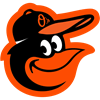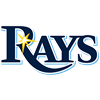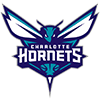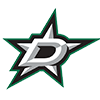Most fantasy content is centered around rankings, projections and player analysis. That has been true to this point in the Underdog Best Ball Series, as we've looked at the various ways to evaluate both hitters and pitchers for drafts on the site. However, equally important to player evaluation is tailoring contest and player selection to your specific goals as a fantasy player.
Sign up for Underdog to receive a free 6-month subscription to RotoWire and first deposit match up to $100 with promo code RWMLB. Click here to claim this special offer now.
The Contests
Underdog offers a wide range of contests, most notably varying in contest size and buy-in levels. There are standalone leagues available that have buy-ins spanning from $5-$25 and sizes that range from two to 12 teams. These contests run from Opening Day to the final day of the regular season. Both head-to-head and three-team leagues pay out only the league winner. Six-team leagues pay out the top two finishers, while 12-team leagues pay out the top three positions.
In addition, there are two tournaments open at most times. One is typically a smaller size; the current offering is called "The Perfect Game," which has a $250 buy-in and 432 entrants. The top 144 positions pay out, with a minimum prize of $300 and an overall winner top prize of $20,000. "The Dinger" is the main tournament, and it will likely take until close to Opening Day to fill, as it features 56,160 teams. The top 9,360 teams cash, with the minimum prize being $10 and the top prize being $100,000.
While the details of these contests vary greatly, the general format is consistent. Rather than running from Opening Day to the close of the season, the contests take place over multiple periods, with teams getting gradually eliminated at various points in the campaign. After 18 weeks, the top two teams in each league advance to the quarterfinals. After being placed in a new 12-team group, the quarterfinals run for two weeks, at which time the top two teams advance to the semifinals. Finally, the top two teams after another two-week period in a new league will advance to the final. In "The Dinger," the final round consists of 460 teams. Any team that advances into the quarterfinals will win at least $10.
Know Your Goals
This may sound simple, but understand what you want to accomplish before you enter contests. Similar to what you find in DFS, Underdog offers what amounts to cash games (2 and 3-team leagues) as well as tournaments or smaller contests with the opportunity to do better than doubling or tripling up your buy-in. For example, winning a 12-team league with a $5 buy-in would win $32 and finishing second would return $17. For those drafting in bulk, mixing and matching tournament contest entries with cash game entries is a good way to balance potential risk and reward. In a two-team league, you need to beat one other team to roughly double your money. In a tournament, a team needs to finish in the top 16 percent of their league to do the same. Similarly, for those drafting a high volume of teams, diversifying players in the early rounds is also a good strategy.
Of course, the upside of advancing multiple rounds in a tournament is substantial. Those drafters who want to pick a few teams and hope to hit it big are best served by entering a few teams into a tournament such as "The Dinger."
Cash-Game Contests
For purposes of this article, we'll consider two and three-person drafts as cash games, because they offer at least a 33 percent chance of returning a profit. Following projections and drafting based on value (particularly in the early rounds) will be enough to provide a substantial chance of success in these contests. Due to the limited number of teams in the league, there's little reason to take on unnecessary risk because the upside to winning the league is relatively small compared to the downside of falling behind based on a lack of production from top picks. Based on the RotoWire Underdog cheatsheet, examples of players to avoid in cash game contests include:
- Mike Trout (7.6 ADP) - Trout's talent remains undeniable, but he's appeared in 155 games and recorded 645 PA combined across the last two seasons.
- Jacob deGrom (23.8 ADP) – deGrom's ADP is likely to fall substantially based on the news that he is experiencing tightness in his side. Despite remaining the best pitcher in the league on a per-start basis, he's thrown only 156.1 innings and made 26 starts combined across the last two campaigns.
- Byron Buxton, George Springer and Luis Robert are players with riskier health profiles who show a significant gap in projected points vs. ADP.
Tournament Contests
Target Per-Game Production
Unlike cash-game contests, tournaments offer the corresponding upside to take on an appropriate risk. This isn't necessarily to say that stacking Trout, deGom and Buxton on a team is a winning strategy, but it does mean that investing in stud producers on a per-game basis who also have significant risk is more worthwhile than it is in cash-game formats. For example, Trout averaged 10.59 Underdog points per game in 2022, third-best among all hitters. If he managed to stay on the field for 140 games, there's some room for profit based on his current ADP. Buxton offers an even more stark example. Of course, he's failed to reach 400 plate appearances in each of the last five seasons, so a healthy season is by definition a rare occurrence. However, he finished 2022 with 9.23 Underdog points per game, good for 22nd in the league. If he came close to a full season, he'd be providing borderline second-round value while costing a third- or fourth-round pick.
Find Ways to Make Your Teams Unique
Much of the offseason fantasy talk has centered around the lack of quality outfielders relative to the number of spots on a fantasy roster that must be filled. Drafters have taken that to heart so far, as the first eight ADP slots on Underdog are outfielders. According to RotoWire's projections, that stands out, as Freddie Freeman, Jose Ramirez, Trea Turner and Paul Goldschmidt all appear in the top five in total projected points for the season. While it may be tempting to join the crowd and take an outfielder in the first round, drafting an infielder at a better value will help your team become unique by shaking up your overall structure. For those familiar with drafting best-ball football teams, this is similar logic to the Zero-RB strategy.
Furthermore, it's important to know the rules of the format. While sites such as NFBC and other traditional roto leagues require five starting outfielders, there are only three starting outfielders in Underdog, the same as the number of starting infielders.
Another way to make your team unique is to rely less upon ADP and projections. This isn't to say you should pass up all projected value, but getting a unique combination of players on a roster by being aggressive relative to ADP is another way to for teams to have tournament-winning upside in large fields. Similarly, late in drafts, look for players whose ADP suggests they aren't drafted regularly. In the final weeks of a contest, having a player who is on relatively few teams produce for you is another way to launch up the leaderboard.
Stacks
Stacks are popular in DFS and NFL best-ball contests. While stacking hitters in a lineup doesn't carry the same correlation as stacking a quarterback and a few pass catchers from the same team, drafting multiple players in the same batting order will increase your squad's upside. Having the top two members of a lineup reach base and the third hit a homer, driving in all three, is a quick way to rack up points.
Check the Schedule
While it's not worth building your entire draft around a team's late-season schedule, it is another factor worth noting. Volume is one easily identified concern, as teams with seven games in a week naturally offer their players more opportunity to produce fantasy points. Where teams play during the final stages of the season may also become important. For example, the Rockies spend the final two weeks of the regular season at home — they also have a doubleheader against the Dodgers in that span — while the Reds play 15 of their 25 games in September at their extremely hitter-friendly home park.








































